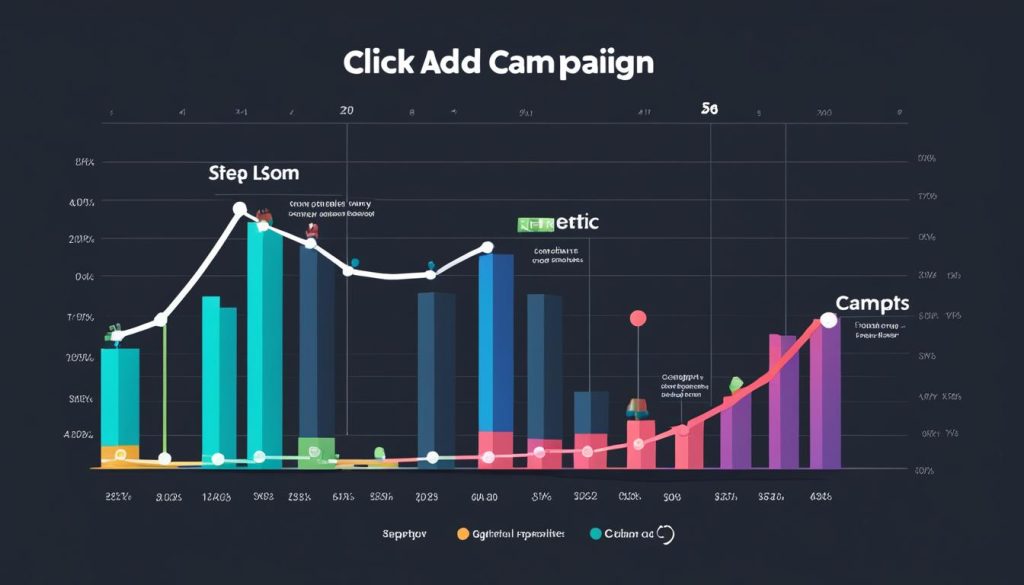At Grew Studio, under the leadership of our CEO Adam Oliver Kollar, we immerse ourselves in the labyrinthine challenges of measuring and analysing ad performance. This expertise is critical in the ever-evolving realm of analytics and data analysis, providing a compass for businesses desperate to understand the impact and effectiveness of their advertising endeavours. Performance metrics, from conversion tracking to ROI measurement, are the beating heart of campaign analysis, and we excel in decoding these figures to drive data-driven decisions.
In the dynamic landscape of digital marketing, wrestling with performance metrics is the norm. The deluge of data can overwhelm, yet our approach is steadfast – dissecting KPIs methodically for campaign insights. We recognise that while impressions hint at potential exposure, scrutinising click-through rates and their link (or absence thereof) to conversions reveals a nuanced narrative of ad effectiveness. It’s planning meets action – and it starts with understanding the story that our data tells us.
Moreover, our commitment to demystifying these complexities is exemplified by offering a complimentary 30-minute strategic business consultation. This is our way of bridging the gap between marketers’ quest for clarity and the sophisticated analytics necessary for precise campaign adjustment and optimisation.
Key Takeaways
- Understanding the plethora of performance metrics is essential for optimising ad campaigns.
- Impressions alone are a precarious gauge of ad success; a holistic approach is vital.
- High click-through rates do not guarantee conversions, prompting a need for deeper analysis.
- Data-driven decisions stem from a comprehensive examination of KPIs.
- Grew Studio’s free strategic consultation aims to navigate the intricacies of ad performance analysis.
Understanding Impression Metrics and their Limitations
As we delve into the realm of digital advertising, it’s essential to grasp the role of impression metrics and recognise their bounds. Impressions serve as a fundamental gauge of an advertisement’s exposure potential, and yet, they present an incomplete narrative on their own. To comprehend this concept fully, it is imperative to define what constitutes an impression and to assess its pros and cons as a performance indicator.
Defining Impressions in Digital Advertising
In the digital sphere, impressions are quantified as the number of times an ad appears on someone’s screen. However, this metric does not ensure that the advertisement was actually noticed by the viewer. Understanding this nuance becomes crucial when employing performance tracking and when incorporating audience insights during campaign analysis.
Pros and Cons of Using Impressions as a Performance Indicator
Impressions can be a potent tool for tracking the scope of an ad’s reach. They indicate scale and can be instrumental in ad spend analysis, but they fall short in confirming viewer engagement or action. The deployment of tracking pixels may enhance data collection; however, the reliance solely on impressions may not fully reflect campaign efficacy.
Impressions Vs. Actual Views: The Visibility Factor
The ambiguity of impressions lies in their lack of concrete viewer attention metrics. Let’s consider the crux of the matter: are these impressions translating into real views, where the audience genuinely observes the ad? Here lies a critical limitation of this metric as it pertains to gauging accurate ad performance and effectivity.
| Impression Metric | Function | Limitations |
|---|---|---|
| Impressions Count | Indicates the number of times an ad is displayed | Does not guarantee viewer attention or interaction |
| Cost Model | Basis for ad spend by charging per impression | May not equate to actual consumer engagement or return on investment |
| Tracking Pixel Data | Collects data on user behaviour after seeing an ad | Requires complementary metrics for complete ad effectiveness analysis |
Crucially, understanding the shortcomings of impression metrics empowers advertisers to seek additional data points. It encourages a more holistic approach to performance tracking, ensuring a campaign that not only reaches but resonates with intended audiences.

The Crucial Role of Click-Through Rates in Campaign Analysis
As we delve into the nuances of digital advertising, it’s become increasingly clear that click-through rates (CTR) hold a pivotal position in understanding user interaction and gauging campaign performance. Typically, a high CTR has been seen as a marker for success, indicative of content resonating sufficiently with the audience to inspire an immediate action—the click. However, in our experience, the connection between click-through rates and actual conversion rates isn’t as straightforward as one might expect.
In our engagement analysis, we’ve observed that while CTR reflects the initial customer interest, it doesn’t always translate into conversions—which are the definitive actions of purchasing, subscribing, or any other targeted end-goals of the campaign. To accurately assess advertising effectiveness, we consider a spectrum of engagement metrics that offer a more comprehensive understanding of consumer behaviour. These metrics provide us with the essential context to interpret CTRs within the broader landscape of user engagement and business targets.

Digging deeper, we’ve identified a nuanced measure: the view-through rate. This metric acknowledges the users who, upon exposure to an ad, may not click immediately but will visit the website later on. This delayed action is quite common in consumer behaviour and underscores the importance of integrating view-through rates into our engagement analysis. Bringing both CTRs and view-through rates into our performance matrix provides a richer, more detailed outlook on the true influence ads have on our audience.
- Immediate clicks – those lured by the ad’s immediate appeal, gauged by CTR.
- Delayed responses – visitors who recall and act upon the ad’s message at a later time, reflected in view-through rates.
In conclusion, our understanding of these metrics allows us to craft more effective marketing strategies that target not just the fleeting attention but the lasting interest of our audience. As we continue to refine our approach, we’re committed to keeping apace with the evolving digital landscape, ensuring our capacity to drive meaningful user interaction and solidify robust conversion rates for our clients.
Emerging Time-Based Ad Models and Viewer Engagement
In recent years, we’ve observed a pivotal shift in digital advertising that significantly affects user behaviour—the emergence of time-based ad models. Traditional ad models often focus on metrics like impressions or clicks, which while useful, don’t always paint the fullest picture of viewer engagement. Time-based advertising presents a new paradigm, promising to redefine performance trends in the industry.

Shift to Time-Based Advertising
Time-based ads are transformative, charging for ad exposure in terms of the duration an ad is actively viewed by a user. This model incentivises content that can hold consumer attention for more strategic periods, potentially leading to better campaign adjustments and enhanced ROI. We are at the cusp of this change, recognising that the guarantee of advertisement visibility could herald a new standard in the evaluation of ad ROI.
Impact of Time-Based Models on Viewer Attention
These innovative ad models are not only a buzzword in the marketing community but are showing tangible signs of shifting user interaction trends. Unlike impression-based metrics, where the value is placed on quantity, time-based models place the emphasis squarely on the quality of engagement. This ensures that user interaction is more meaningful, driving performance trends that reflect genuine interest rather than passive ad consumption.
| Ad Model | Visibility Guarantee | Typical User Engagement | Impact on ROI |
|---|---|---|---|
| Traditional Impression-Based | No | Low Engagement | Variable ROI |
| Time-Based | Yes | High Engagement | Potentially Higher ROI |
The comparative data underscores the potential for time-based ads to significantly reshape advertising strategies. With a focus on increasing visibility and enhancing user interaction, advertisers could see a more consistent and predictable ROI. Moreover, the adaptability inherent in these models allows for real-time campaign adjustments, aligned with performance trends and user behaviour analysis.
Gauging Audience Reach with Unique Viewers and Visitors
In our pursuit to comprehend the vast diaspora that interacts with digital advertising, we place considerable emphasis on metric evaluation concerning unique viewers and visitors. The potency of capturing audience insights and deciphering user behaviour hinges on our ability to accurately quantify the individual footprint within our campaigns. Distinguishing unique individuals over mere numerical counts enhances the fidelity of campaign metrics, ensuring a more realistic measure of the message dissemination.

Whilst acknowledging that this particular metric does not guarantee active engagement or ad recognition, it does provide critical information on the sheer reach an advertising effort can harness. Herein, we shall outline a fundamental table delineating the contrast between unique viewership and aggregate impressions, to spotlight how unique visitors qualify the breadth of an audience more precisely.
| Parameter | Unique Viewers | Total Impressions |
|---|---|---|
| Definition | Count of distinct individuals exposed to the ad | Number of times the ad is displayed |
| Relevance | Indicative of audience diversity | Indicative of ad frequency |
| Impact on Campaign | Provides a scope of actual reach | Offers insight into potential saturation |
| Limits | Does not measure engagement depth | May overstate audience size due to repeated views |
It is incumbent upon us as advertisers to navigate beyond the realm of superficial data and delve into the granularity that unique viewership metrics propose. Our commitment to elucidating the scope of a campaign’s penetration rests on the detailed scrutiny of these figures. Consequently, our strategies are tailored to not just capture an audience but to captivate an entity of engaged and responsive users.
Measuring and Analyzing Ad Performance: The Core Metrics
In our pursuit to understand and enhance the advertising impact, we delve into a range of performance indicators that provide a rounded view of a campaign’s effectiveness. It is through meticulous data collection and analysis that we discern the level of engagement generated by our efforts.

Conversion Tracking and ROI Analysis
At the heart of our performance assessment lies conversion tracking. This powerful metric grants us the insight into how often our ads lead to meaningful consumer actions. Understanding the cost per acquisition is intrinsic to quantifying the efficiency of our spent resources. We assert that a broad ROI analysis, which accounts for both direct and indirect conversions, is essential. This includes those who arrived through organic search after an ad planted the seed of interest, without an immediate follow-through.
Understanding View-Through Rates
In addition to conversions and cost considerations, we recognise the importance of view-through rates. This metric measures the number of users who are exposed to an advertisement and subsequently visit the website. Whilst they may not click on the ad, their later action is a testament to the ad’s lingering influence and a valuable component of attribution modelling.
| Performance Indicator | Role in Analysis | Insights Offered |
|---|---|---|
| Conversion Tracking | Main measure of ad success | Direct consumer actions resulting from ad interactions |
| ROI Analysis | Financial efficiency assessment | Both direct and indirect revenue impact from advertisements |
| Cost per Acquisition | Cost effectiveness of ads | Monetary value spent to acquire each customer |
| View-Through Rates | Measure of ad’s indirect impact | Users who visit the site after ad exposure without immediate clicking |
| Attribution Modelling | Distribution of credit for conversions | Understanding which touchpoints contribute to final conversions |
Leveraging Analytics Tools for In-Depth Performance Tracking
At our core, we firmly believe in harnessing potent analytics tools to elevate our performance tracking capabilities. These sophisticated systems offer a panoramic view of our marketing campaigns, enabling us to extract precise insights from the intricate fabric of data we gather. Our commitment to utilising marketing analytics is unwavering, as we understand the transformative power it holds in the realm of strategic campaign management. Each campaign journey is unique, and with that understanding, we tailor our analytics arsenal for maximal relevance and efficacy.
![]()
The analytical prowess at our disposal emanates from an ensemble of analytics platforms, each bringing invaluable clarity to our decision-making process. With real-time tracking at our fingertips, our campaigns are continuously guided by the latest user behaviours and market trends. Through automated reporting, we cut through the noise, focusing on the data that is most conducive to our goals. An integral component of our approach involves attribution modelling, a method critical for identifying each touchpoint’s role in the conversion pathway and enabling us to distribute credit aptly across various campaign elements.
| Analytics Feature | Benefits | Applications |
|---|---|---|
| Custom Dashboards | Centralised view of key metrics tailored to specific campaigns and objectives | Real-time performance overview and swift strategic adjustments |
| Data Integration | Comprehensive analysis through amalgamation of various data sources | Developing a holistic understanding of campaign performance |
| Automated Reporting | Efficient consolidation and delivery of data reports | Regular, insightful updates facilitating timely interventions |
| Attribution Modelling | Insight into the efficacy of each marketing touchpoint | Optimising multi-channel campaigns for better ROI |
Across the landscape of digital marketing, these technological advancements have incessantly propelled us towards achieving not just better results, but a more profound understanding of our campaign mechanics. As we continue to champion the use of these dynamic analytics tools, we tread forward in our quest for marketing excellence, grounded in data and uplifted by analytics-empowered strategy.
Employing A/B Testing for Effective Campaign Optimisation
In the realm of digital marketing, A/B testing stands as a cornerstone for campaign optimisation. It enables us to experiment with ad variants, pinpointing which elements resonate most with our target audience. Through meticulous metric evaluation, we not only enhance the user’s experience but also bolster the efficiency of our ad spend.
Designing an A/B Testing Strategy
Commencing an A/B testing endeavour requires a strategic approach. Initially, we define clear objectives focused on performance comparison. Subsequently, we determine the specific variables to be tested, such as headlines, call-to-action buttons, or images. Prioritising variables with the potential to significantly impact user engagement and conversion rates lays the groundwork for robust campaign optimisation.
Analyzing A/B Testing Results and Implementing Changes
Following the execution of A/B testing, it’s critical to dive into the analytics reports. We scrutinise the data, dissecting each metric to understand which variant outperformed the other. Evaluating key metrics, like click-through rates and conversion figures, informs which adaptations could refine the campaign before a broader rollout. Performance comparison is pivotal, guiding us in tailoring our initiatives for maximal effectiveness.
| Ad Variant | Impression Share | Conversion Rate | User Engagement | Cost Per Conversion |
|---|---|---|---|---|
| Variant A | 47% | 3.6% | Medium | £1.20 |
| Variant B | 53% | 4.8% | High | £0.95 |
The data above exemplify how variant B, by delivering higher engagement and a superior conversion rate, indicates a more compelling option. Besides, the lower cost per conversion underscores its efficiency, rendering it the frontrunner for future ad spend allocation. Implementing such changes to our campaign crystallises the essence of focused campaign optimisation and strategic metric evaluation.
Developing a Data-Driven Decision-Making Culture
In the realm of contemporary business, data-driven decisions are not just a luxury but a necessity for success. At Grew Studio, we empower organisations to embrace a culture that is rooted in evidence-based strategies, ensuring that every move forward is informed by robust, qualitative data analysis. Emphasising on performance tracking, data interpretation, and analytics strategy, we enable businesses to make astute decisions that align with their growth objectives.
Understanding and utilising campaign metrics judiciously facilitates not just reactionary measures but helps in sculpting broad-spectrum, long-term marketing strategies. It is our conviction that a data-driven framework fosters a proactive environment for ongoing business adaptability.
Through our comprehensive free strategic consultations, we guide our clients to master the nuances of marketing and website performance, underscoring the potency of data interpretation in steering business trajectories.
- Data Interpretation: Unlocking the stories behind numbers for a strategic advantage.
- Performance Tracking: Continuous monitoring to stay ahead of the curve.
- Analytics Strategy: Tactical use of data for refining marketing outputs.
Integral to our approach is the transformation of raw data into actionable insights that incite decisive and profitable actions. Below is a table that delineates the key components of a successful analytics strategy:
| Component | Description | Relevance to decision-making |
|---|---|---|
| Data Collection | Gathering quantitative and qualitative data across various business channels. | Ensures a wealth of information is available for analysis. |
| Data Analysis | Using statistical methods to interpret data patterns and trends. | Helps to make informed decisions based on empirical evidence. |
| Performance Metrics | Defining and tracking KPIs pertinent to business objectives. | Aligns business activities with strategic goals. |
| Insight Application | Implementing discoveries from data analysis into practical strategies. | Translates analysis into concrete performance enhancement. |
In closing, deploying a data-driven ethos across all layers of an organisation embeds a culture of continual improvement and sharpens competitive edge. With the end-goal being a more insightful, agile, and data-savvy enterprise, we at Grew Studio stand as stalwart allies in this transformative journey.
Data Interpretation: Turning Numbers into Actionable Insights
In a landscape brimming with raw data, our emphasis at Grew Studio is not just on data collection, but significantly on the mastery of data interpretation. This critical stage in our analytics journey ensures that numerical data is not just amassed but transformed into clear, actionable insights, enabling us to project and steer toward performance forecasting with greater precision.
Understanding Data Visualisation Techniques
Data visualisation stands as a centerpiece in our analytics reports, providing a visual context that narrates the silent stories behind complex data sets. By implementing a variety of graphs, charts, and interactive displays, we ensure that data interpretation becomes an insightful experience rather than a strenuous task. This process helps to uncover hidden trends and patterns with ease, making them accessible to all our stakeholders regardless of their expertise in data analysis.
Building Narrative with Metrics and Data Stories
We’re not just presenting numbers; we’re crafting data stories that resonate with the essence of analytics reports. These stories serve as narratives that encapsulate the journey of collected data as it evolves into a strategic tool for business decisions. A well-told data story can influence decisions, shape strategy, and drive action far more effectively than spreadsheets ever could.
| Insight | Technique Used | Outcome |
|---|---|---|
| Sales performance trend | Line charts | Revealed seasonal peaks guiding future marketing campaigns |
| Consumer demographic distribution | Heatmaps | Targeted regional personalisation in product launches |
| Product popularity | Bar graphs | Inventory optimisation based on demand |
| Website traffic sources | Pie charts | Resource allocation for best-performing channels |
As we continue to embrace data in all its forms, our narrative not only informs but empowers us to predict and adapt to market movements, securing our place at the forefront of innovation. By translating data into visual narratives, we provide clarity and direction, charting a course through the sea of numbers, and setting the sails for continued growth and success.
Cost Analysis and Ad Spend Optimisation in Performance Evaluation
Within our company, we firmly acknowledge the essence of cost analysis and ad spend analysis in the sphere of performance evaluation. By meticulously balancing the budget against the gains, we ensure that every pound spent is an investment towards substantial growth. The focused assessment of cost per acquisition (CPA) and ROI measurement provides clarity that enables us to shrewdly allocate funds and optimise advertising strategies.
Our relentless commitment to performance tracking coupled with a comprehensive scrutiny of ad expenditures leads to strategic campaign refinement. We pride ourselves on our ability to identify and invest in the most cost-efficient and high-yielding advertising platforms and practices.
| Ad Campaign | Ad Spend (£) | Impressions | Clicks | Conversions | CPA (£) | ROI |
|---|---|---|---|---|---|---|
| Search Ads | 25,000 | 2,000,000 | 35,000 | 5,000 | 5.00 | 150% |
| Social Media | 20,000 | 1,800,000 | 40,000 | 3,500 | 5.71 | 125% |
| Display Network | 15,000 | 1,500,000 | 20,000 | 2,000 | 7.50 | 110% |
Our analytically led approach coherently demonstrates where ad spend can be reduced without compromising campaign performance, further uplifting the ROI. This, in turn, propels a cycle of persistent optimisation, fine-tuning our approach to capitalise on the most effective advertising tactics.
Trend-Watching: Predicting and Adapting to Performance Shifts
At our company, we constantly monitor the horizon for performance trends that are shaping the future of digital advertising. Our expertise in attribution modeling and steadfast commitment to agile campaign adjustments empower us to stay in tune with an industry that never stands still. By employing sophisticated metric tracking tools and deploying a dynamic analytics strategy, we are not just reacting to changes, we’re anticipating them.
Identifying Emerging Trends in Advertising
We recognise that in the digital sphere, innovation is ceaseless. To decipher where the next shift will occur, we constantly analyse market data, consumer behaviour, and technological advancements. Whether it’s the rise of new ad technologies or the swing in consumer preferences, spotting these trends early is paramount to delivering targeted, effective campaigns.
Adjusting to Performance Trends for Sustained Success
Our proactive stance extends beyond mere observation. We swiftly translate these insights into action, ensuring that every campaign we craft not only meets but exceeds the evolving standards of the industry. It is this agility that sets us apart, always ready to refine our techniques to the crux of modern requisites for prolonged triumph in a rapidly evolving digital landscape.
| Trend | Implications | Strategic Adjustments |
|---|---|---|
| User Privacy and Data Security | Increased consumer awareness and regulations | Revised data collection and targeting methodologies |
| Artificial Intelligence in Advertising | Automation and personalised ad experiences | Integration of AI-driven insights into campaign development |
| Shift to Video and Interactive Content | Higher engagement and user retention rates | Focusing on rich media formats and storytelling |
| Evolving SEO and Search Algorithms | Continuous updates changing SERP dynamics | Ongoing SEO optimisation and content quality emphasis |
| Social Media Algorithm Changes | Variable content reach and consumer interaction | Adaptive social media strategies and active community management |
Conclusion
As our exploration of ad performance metrics culminates, we reflect on the integrated approach essential for a truthful appraisal of an advertising campaign’s effectiveness. In the realm of digital marketing, understanding and utilising the interplay between impressions, click-through rates, view-through rates, and conversions is not just beneficial – it’s imperative. Our expertise at Grew Studio has consistently emphasised that comprehensive campaign analysis hinges on the symbiotic relationship between these metrics.
Summarising Key Performance Metrics and Their Interplay
Measuring and analysing ad performance extends far beyond tallying figures; it involves delving into how each metric influences another and contributes to the campaign narrative. Impressions set the stage for awareness, CTRs indicate initial engagement, view-through rates uncover delayed responses, and conversions mark the desired culmination of ad journeys. It is the intricate weaving together of these elements that allows us to benchmark success and drive campaign optimisation forward.
Enabling Long-Term Ad Success with Strategic Metric Evaluation
At the heart of sustaining ad success lies an unwavering commitment to strategic metric evaluation. Leveraging KPIs and state-of-the-art analytics tools, we have nurtured a data-driven culture that thrives on precision and continual learning. This dedication empowers us to not only act upon data-driven insights in the short term but also to construct prosperous long-term strategies for the brands that entrust us with their narratives. Embracing this philosophy, companies can pave the way for robust performance tracking and secure the rewards of an optimised and successful advertising campaign.
FAQ
What does measuring and analysing ad performance entail?
It involves using performance metrics, analytics, and data analysis to assess the impact and efficacy of advertising campaigns. This includes tracking conversion rates, reviewing ROI, and making data-driven decisions to enhance ad effectiveness and achieve key performance indicators (KPIs).
Why are impressions considered a limited performance indicator?
While impressions provide a broad indication of an ad’s exposure, they do not reflect whether the ad was actually viewed or interacted with by potential consumers. Impressions also don’t directly measure campaign reach or conversions, requiring additional metrics for a more complete performance analysis.
How do click-through rates (CTR) contribute to campaign analysis?
CTRs represent the ratio of users who click on an ad to the number of total users who see the ad (impressions). This metric helps advertisers understand user engagement and interaction with their ads but must be combined with other engagement metrics for a holistic view.
What is the shift to time-based advertising models about?
Time-based advertising charges advertisers for ads that are fully visible for a set amount of time, emphasising increased engagement and viewer attention. This model is an alternative to traditional impression-based billing and could lead to better ad performance.
Why is tracking unique viewers and visitors important?
Tracking unique viewers and visitors helps advertisers measure the reach of their campaign by identifying the approximate number of distinct users who have potentially been exposed to an ad. This metric is an integral part of understanding and evaluating audience reach.
What is the importance of conversion tracking and ROI analysis?
Conversion tracking identifies how many users take the desired action after interacting with an ad, while ROI analysis determines the profitability of the ad spend. Together, they help advertisers evaluate the direct financial impact of their campaigns and optimise future ad strategies.
How do analytics tools aid in performance tracking?
Analytics tools provide in-depth insights by collecting and processing vast amounts of campaign data. These platforms enable performance tracking, reporting, and analytics that guide strategic decisions, help optimise marketing efforts, and can improve ROI.
What role does A/B testing play in campaign optimisation?
A/B testing allows marketers to compare variations of ad components to determine which performs better in engaging the audience and driving conversions. By analysing test results and implementing changes, businesses can refine their approach for more effective campaigns.
How do you create a data-driven decision-making culture?
Fostering a data-driven culture involves prioritising data analysis in decision-making processes. This means regularly reviewing campaign metrics, interpreting data accurately, and using insights to drive strategic marketing actions.
Why is data interpretation and visualisation crucial for businesses?
Data visualisation transforms complex data sets into easy-to-understand formats, aiding in the identification of performance trends and patterns. By creating compelling data narratives, businesses can make more strategic decisions and effectively communicate insights to stakeholders.
How does cost analysis improve ad spend optimisation?
Cost analysis examines the costs involved in acquiring conversions, helping advertisers understand the effectiveness of their ad spend. This ensures budget allocation is strategic and optimised, maximising ROI and minimising waste.
How can businesses adapt to emerging performance trends?
By actively monitoring performance trends, predicting market changes, and engaging in attribution modelling, businesses can swiftly adjust their advertising strategies. This proactive approach contributes to sustained success in a dynamic advertising environment.
What is the interplay between key performance metrics?
The interplay between metrics like impressions, CTR, view-through rates, and conversions gives advertisers a more comprehensive view of their campaign’s success. Understanding how these metrics influence one another is essential for thorough campaign analysis and optimisation.





